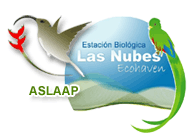Biodiversity
Panama is a small country but has a strategically important role as a fragile biodiversity corridor between the Amazon and Mexico. Panama comprises less than 0.5% of the world’s terrestrial surface but possesses between 7 and 10% of all known life forms and 200 distinct ecosystems.
Within this land base, Panama contains two of the world’s recognized global biodiversity hotspots – areas of immensely high and often unique biodiversity that is under considerable threat by human activity. The region also has one of the highest deforestation rates in the world – losing an average of 1.9% of its forest cover per year. A major contributor to deforestation is the practice of slash and burn – a common traditional technique used by some campesinos (farmers) to clear land for farming and pastures. This practice not only destroys mega-diverse primary rainforest, but depletes the soil of its vital nutrients forcing farmers to move deeper into the forest every few years in search of fertile soil to support them and their families.
The park serves as a refuge for a great number of endangered flora and fauna:
Flora and Landscapes
As incredible as it appears, 7 of the 12 life zones that are found in Panama, are within the protected area of La Amistad International Park. In the lowest sedimentary plains grows very humid premontane forests. Read more »
Fauna
La Amistad International Park sustains over 115 species of fish, 250 species of reptiles and amphibians, 215 species of mammals, and 600 species of birds. Among these exists an incredible ensemble of threatened, endangered, and endemic species. Based on these characteristics, La Amistad received World Heritage status because it fulfills every criterion for natural sites, as determined by the Operational Guidelines of the World Heritage Convention. Read more »
Birds
Out of the more than 400 bird species recorded in the protected area are the harpy eagle, the endemic glow-throated hummingbird, the magnificent quetzal (Pharomachrus mocinno), the extraordinary umbrella bird, the three-wattled bellbird and the crested eagle one of the biggest and most endangered birds of prey in the region. Read more »









